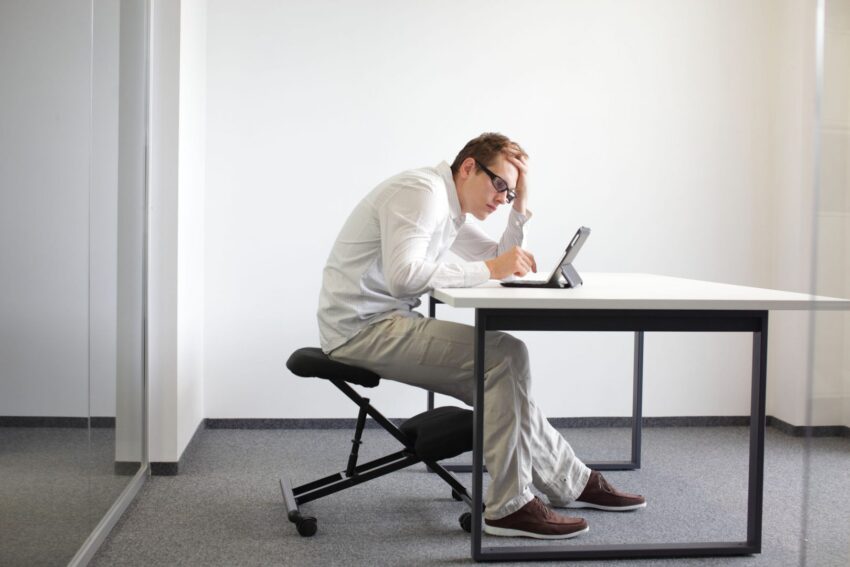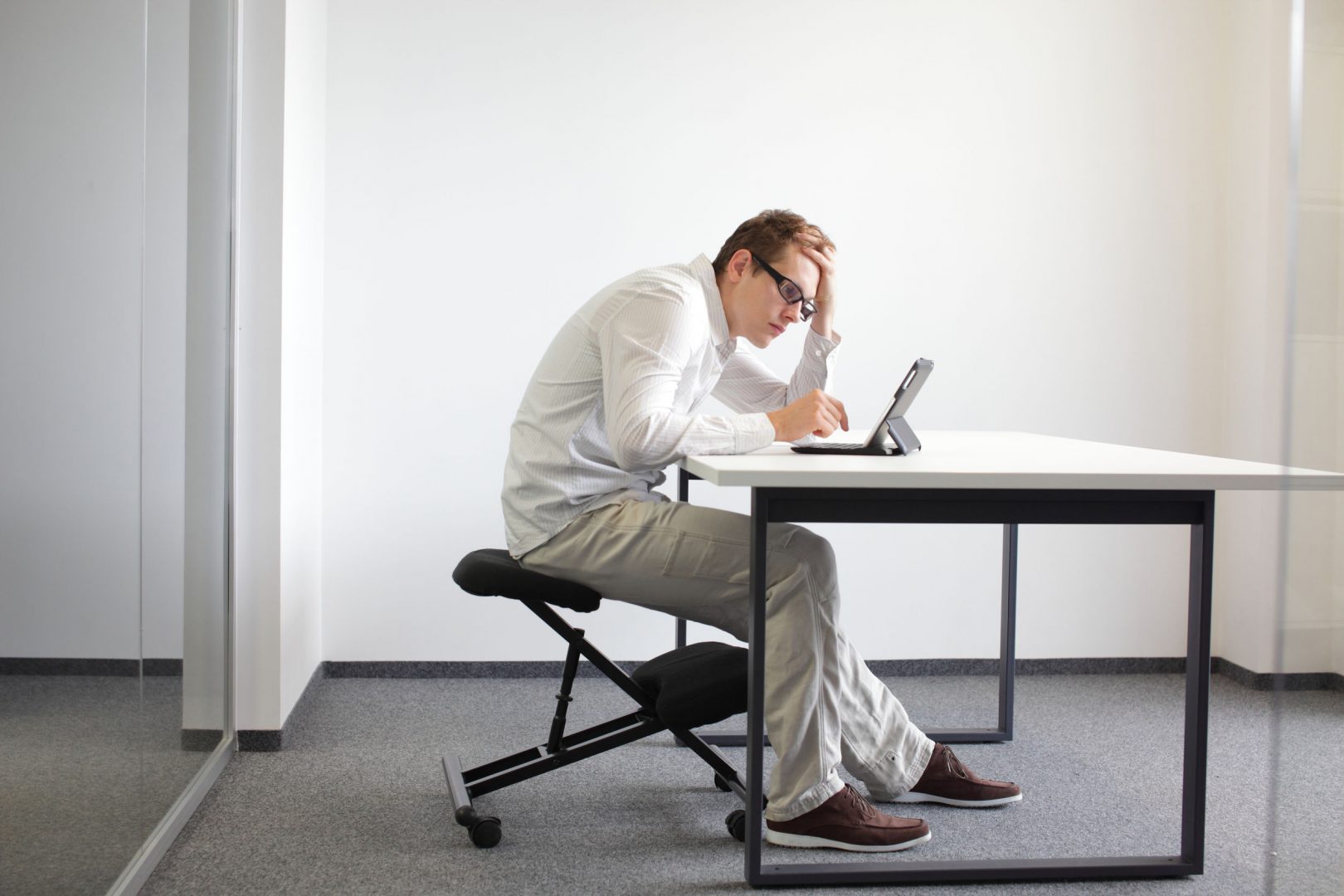Over 90% of the population will have an episode of back pain. There are many potential causes of back pain. Because many people spend a significant amount of time at work, the habits we develop there can also impact the risk of developing this type of pain. Prolonged standing, sitting, bending, or twisting can all result in spinal injury. By adopting the following practices, you can set yourself up to keep your back safe while at the office.
Lifting at Work
We often cannot avoid lifting, but we can optimize our environment so that when we lift, we use the strongest muscles in our body to stabilize our spine. To lift safely, we should lift straight up and down, no twisting or bending maneuvers. Instead of lifting with our back, we should bend from the hips and knees, then use the leg muscles to come upright. If what needs to be lifted is still too heavy, ask for assistance. In terms of storage, all heavy items should be stored at waist height to avoid excessive bending and unnatural body alignment to lift that item again in the future.
What is the Best Sitting Position?
There are two options for the best seated position at work and both begin with the same foundation. Sit with both feet flat on the floor and with hips and knees flexed at approximately 90 degrees. Your chair should not be too short or too tall. From this foundation, there are two good options for sitting:
- Sit in a slightly reclined position with lumbar support. There is less pressure on the discs in the lumbar spine with this position than sitting in a very upright, rigid posture. Also, having lumbar support allows the spine to be in a more supported neutral position.
- Sit balanced at the front of your chair. Many people practice this seated position by using an exercise ball as their chair. The advantage of using an exercise ball is that it requires proper body alignment and core muscle engagement.
You can approximate sitting on an exercise ball by using some of the advice that my old piano instructor gave me when sitting at a piano. He said to sit at the front part of the chair, feet out front with weight equally placed on each foot and the rib cage slightly elevated to create a well-balanced position when getting ready to play. Additionally, this position can lead to more focus and more work productivity, depending upon the job at hand.
In addition to having a proper sitting position, you should get up every 30 minutes. Try to stand up and walk around your office every 30 minutes or so, it will make a difference. This practice may actually improve your oxygenation and your focus while at work. Additionally, doing a couple of deep knee bends can help as well.
How To Do a Deep Knee Bend
Put your feet about shoulder distance apart. Keep your heels on the ground as you slowly bend your knees as though you are going to sit on your chair. Once you get down to where your chair is, touch your seat to the chair and then stand back up. Once you can do this, you can actually start bending even more deeply. It is important to keep your knees apart, heels on the ground, and maintain balance.
Another exercise you can do once or twice an hour would be some simple range of motion exercises for the neck, shoulders, and upper back. Take
some gentle deep breaths and imagine a balloon tied to the top of your head, allowing the head to feel lighter and the neck to stretch. In this relaxed position, gently roll your head clockwise and then counter clockwise. Follow this with some shoulder rolls, both forward and backwards, using deep breathing to engage your core to assure that you have good balance in your seated position.
These little breaks for posture, flexibility, standing, and deep knee bends not only help your circulation but can also increase your awareness and focus for work and help decrease your incidence of back pain.
The Proper Position of Computer Monitors & Keyboards
The tools you use at work, such as the computer monitor, keyboard, or mouse, should be in a position in which you can sit and work in good
balance. They should not be too low on your lap and should not be too far forward where you have to reach them; they should be positioned to avoid straining.
Similarly, the work screen or computer monitor should be at a position where you are looking slightly down toward the monitor, and no straining up to look at a monitor. Looking slightly downward takes pressure off of the facet joints and muscles in the back of your neck. It also allows for better overall balance of your head on your neck on your shoulders. If you are chronically looking up at a monitor, not only are the muscles in the back of your neck more tense, but the facets are more constricted and can lead toward additional tightness in your neck and upper back. Additionally, this imbalance can then lead to compensatory changes in how you are actually sitting and can affect your low back as well.
Some people will actually use a standing desk at times at work. A few points for the use of a standing desk include making sure the work surface is still in a good position for use so that you are not reaching either too high or too low to work. Secondly, make sure the surface you are standing on is well supported and not too hard or soft. Thirdly, consider having a small step-up for one foot. You may recall that the bars in the old Wild West would have a brass rail at the bottom of the bar so the cowboys could put one foot up on the rail while they were standing at the bar. This is good ergonomics and helps take pressure off of the lower back. Consider a small step-up for one foot or the other when you are standing at your desk.
In summary, although most of us will have an episode of back pain, many of us can take steps to help decrease the frequency or likelihood of having back pain due to work. By making relatively simple changes to our work environment, it is possible to decrease the incidence of work-related back pain.
By Michael W. Hasz, MD, FACS




